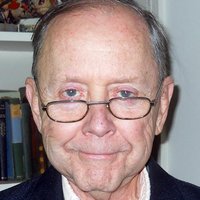Why Does the Archdiocese of Los Angeles Have So Few Auxiliary Bishops?
COMMENTARY:The brutal murder of Bishop David O’Connell has aggravated the episcopal shortfall in the largest diocese in the US.

Shock and grief were the initial reactions to the killing of Los Angeles Auxiliary Bishop David G. O’Connell. Beyond the horror of the brutal murder, however, lies a prosaic fact: With the death of Bishop O’Connell, the huge archdiocese faces an episcopal shortfall in one of the busiest seasons of the year for auxiliary bishops.
Bishop O’Connell was shot to death, apparently in his sleep, during the night of Feb. 18. Police charged Carlos Medina, husband of the archbishop’s housekeeper, with the crime.
Archbishop José Gomez of Los Angeles did not refer directly to these events in a Feb. 24 Lenten statement called “Learning to Forgive,” but his words seemed to fit what had happened. “None of this is easy. Jesus knows that, too. … But we have the power to forgive because in him we have been forgiven.”
While the message was comforting, it left unanswered the practical question facing the archdiocese.
In Los Angeles as elsewhere, spring means confirmations, and in dioceses with auxiliary bishops they and the ordinary share the workload of administering the sacrament to children and young people. That is no small chore in Los Angeles which, with 4,350,000 Catholics and 238 parishes organized in five “pastoral regions,” is by far the country’s largest.
Bishop O’Connell’s death brought the number of active Los Angeles bishops to just three—Archbishop Gomez and two auxiliaries — Bishop Marc Trudeau and Bishop Alejandro Aclan. But Bishop Aclan is recovering from a stroke suffered last summer.
By contrast, the Archdiocese of Chicago (2,093,000 Catholics, 221 parishes) has eight active bishops — Cardinal Blase Cupich, the ordinary, and seven auxiliaries. Even the comparatively small Archdiocese of Washington (667,000 Catholics, 139 parishes and missions) has five active bishops — Cardinal Wilton Gregory and four auxiliaries.
What accounts for the disparity in episcopal manpower between well-stocked dioceses like Chicago and Washington and the huge, undermanned Archdiocese of Los Angeles? Unforeseen accidents of timing certainly have something to do with it — Los Angeles had an additional auxiliary bishop until last June, when Bishop Robert Barron, who had served there since 2015, was named Bishop of Winona-Rochester, Minnesota.
Part of the explanation also may reside in the fact that Chicago’s Cardinal Cupich is a member of several Vatican departments (“dicasteries”) and travels frequently to Rome for meetings. Archbishop Gomez also had plenty on his plate outside Los Angeles from 2016 to 2022 when he was, first, vice president and then president of the U.S. Conference of Catholic Bishops.
As it stands, the situation in Los Angeles focuses attention on the office of auxiliary bishop — what they are and what they do. Of the 273 active bishops in the United States, 77 are auxiliaries.
Perhaps the most important thing to say about an auxiliary bishop is that he is fully a bishop in virtue of his episcopal ordination — no less a bishop, that is, than an archbishop, a cardinal or even a pope. Auxiliaries also are full members of the national conference of bishops, with voice and vote — except on budgets and diocesan assessments, about which only ordinaries can vote.
Canon 403 of the Code of Canon Law says the pope appoints auxiliaries “at the request of the diocesan bishop.” But although that is usually how it works, it sometimes happens that the pope names an auxiliary whom the local ordinary hasn’t requested — if, for example, he wants the man to be part of the hierarchy but doesn’t consider him ready to be an ordinary yet.
It can also happen that the pope names an auxiliary with “special faculties” in what Canon 403 calls “serious circumstances even of a more personal character” — in other words, when Rome finds the local ordinary permanently or temporarily unfit to manage a diocese but doesn’t want to remove him from office.
Canon law says auxiliary bishops “aid the diocesan bishop in the entire governance of the diocese.” In large dioceses these days, that often means representing the ordinary in a particular area. At the time he died, Bishop O’Connell was episcopal vicar of the San Gabriel pastoral region, one of the archdiocese’s five.
The canons don’t speak of the role of auxiliary bishops as ministers of confirmation, but that is a familiar part of their duties. In the wake of Bishop O’Connell’s death, the archdiocese of Los Angeles can, and perhaps will, meet the demand in this year’s confirmation season by turning to one or more of its retired bishops or even designating priests to administer the sacrament, something that can be done when necessary — necessity understood to include too many confirmations for the available bishops to handle.
Meanwhile Catholics mourning the loss of Bishop O’Connell are left to wonder why the Vatican has been so slow to increase the number of auxiliaries in Los Angeles, something one would have thought an obvious pastoral need even before the recent tragedy.














